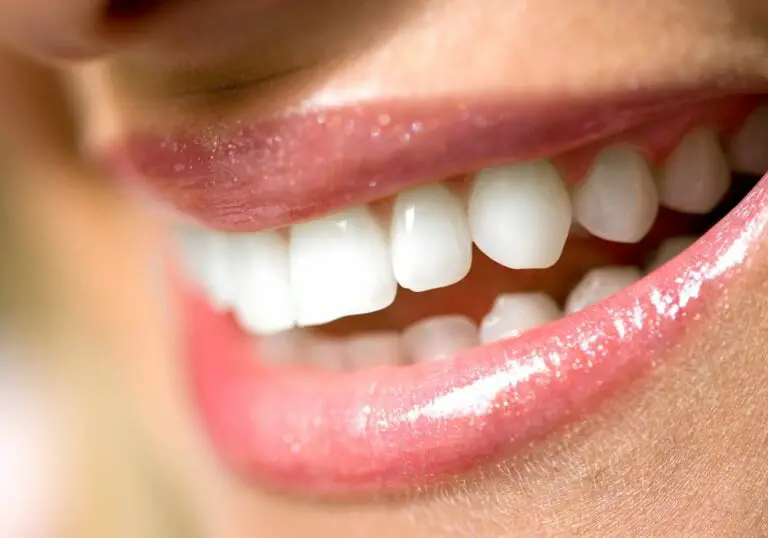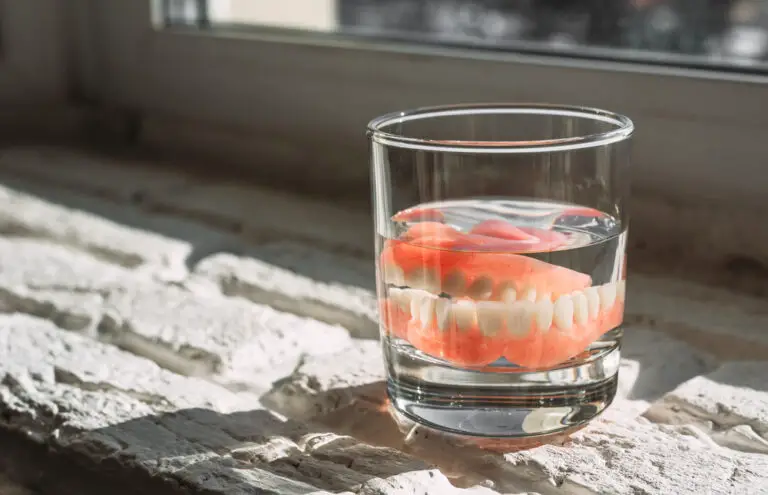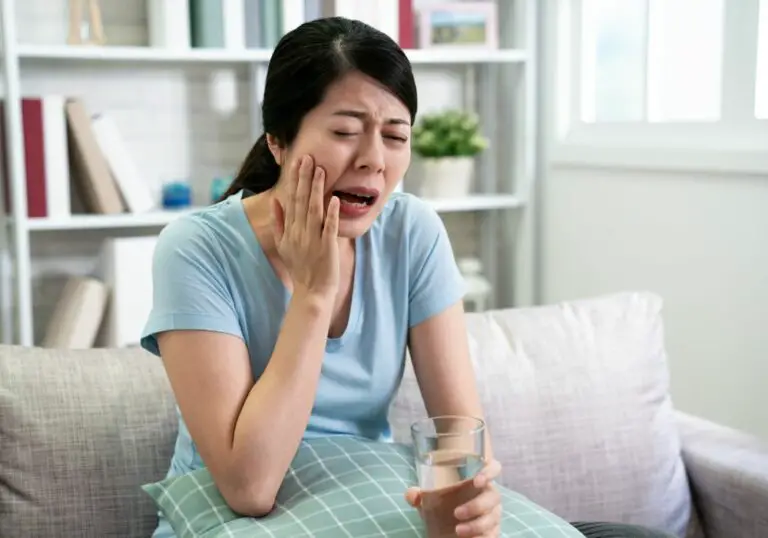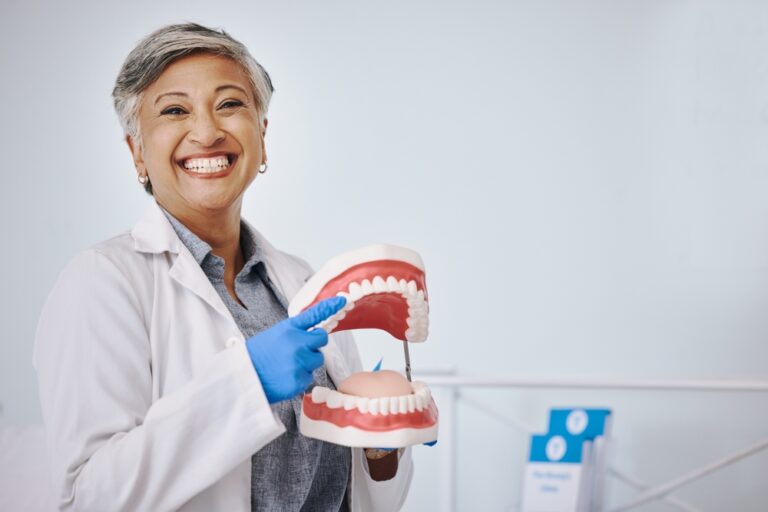Having stains on your teeth can be embarrassing and make you feel self-conscious about smiling or talking. Stains can range from light yellowish discoloration to dark brown or grey marks on your teeth. There are various causes of tooth stains, including food and drinks, smoking, medications, age, genetics, and trauma.
While having pearly white teeth may seem ideal, aggressively scraping or scrubbing your teeth at home to remove stains can actually cause permanent damage. Your tooth enamel does not come back once worn away. Read on to learn what causes stains, if and how you can safely remove them at home, when to see a dentist, and effective stain removal methods.
What Causes Stains on Teeth?
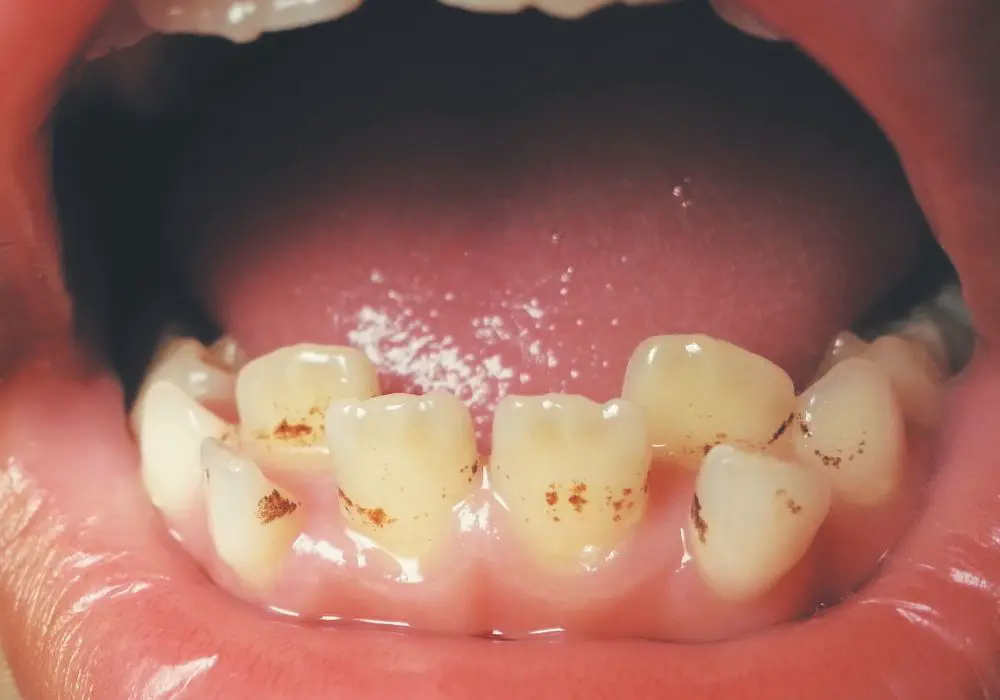
There are two main categories of stains that can form on your teeth:
Extrinsic stains develop over time when compounds from foods, drinks, tobacco, and other sources get embedded into the microscopic pits and grooves of your enamel. Common causes include:
- Coffee, tea, colas, and red wine – These contain deep coloring agents that stick to enamel.
- Berries, tomato sauce, curry, soy sauce – Dark pigments can stick to your teeth.
- Tobacco use – Tar and nicotine lead to brownish stains.
- Poor oral hygiene – Plaque buildup on teeth causes yellowish discoloration.
- Swimming in chlorinated pools – Chlorine can stain enamel.
- Medications – Antibiotics like tetracycline cause temporary stains.
- Fluorosis – Over-exposure to fluoride causes white spots.
Intrinsic stains occur when the inner structure of the tooth changes color, often due to aging, genetics, trauma, or taking certain medications as a child.
- Aging – Enamel naturally becomes thinner and transparent. The yellowish dentin underneath starts to show through.
- Genetics – Some people have thinner, more translucent enamel.
- Medications – Taking antibiotics like tetracycline before age 8 can cause intrinsic grey/brown stains.
- Excess fluoride – Can cause brown intrinsic staining in developing teeth.
- Injuries – A blow or trauma to a tooth can cause grey discoloration.
Is Scraping Teeth Effective for Stain Removal?
Scraping, scrubbing, or abrading your teeth at home with tools, baking soda, or abrasive toothpaste in an attempt to remove stains is not recommended. Here’s why:
- Enamel damage – The enamel is the protective outer layer of your teeth. It does not regenerate like other tissues in your body. Aggressive scraping or brushing wears down enamel and exposes the sensitive dentin underneath. This can lead to permanent damage, increased staining, temperature sensitivity, and higher decay risk.
- Only removes surface stains – Most tooth discoloration penetrates below the enamel surface into the dentin layer or deeper inner structure of the tooth. Scraping can only remove some superficial extrinsic stains from the enamel, not the deeper intrinsic stains.
- Can worsen appearance – Attempting to scrape off intrinsic stains can actually make them look more pronounced by making the enamel thinner and increasing surface roughness.
- Causes gum recession – Overly vigorous brushing or scraping tools can wear away gum tissue and expose vulnerable tooth roots to bacteria and temperature changes. This leads to sensitivity and root cavities.
- Ineffective for set-in stains – Many stains become set into the microscopic enamel pores or dentinal tubules. Simply scrapping the surface does not penetrate deep enough to extract these stains.
Safe Methods for Removing Minor Stains at Home
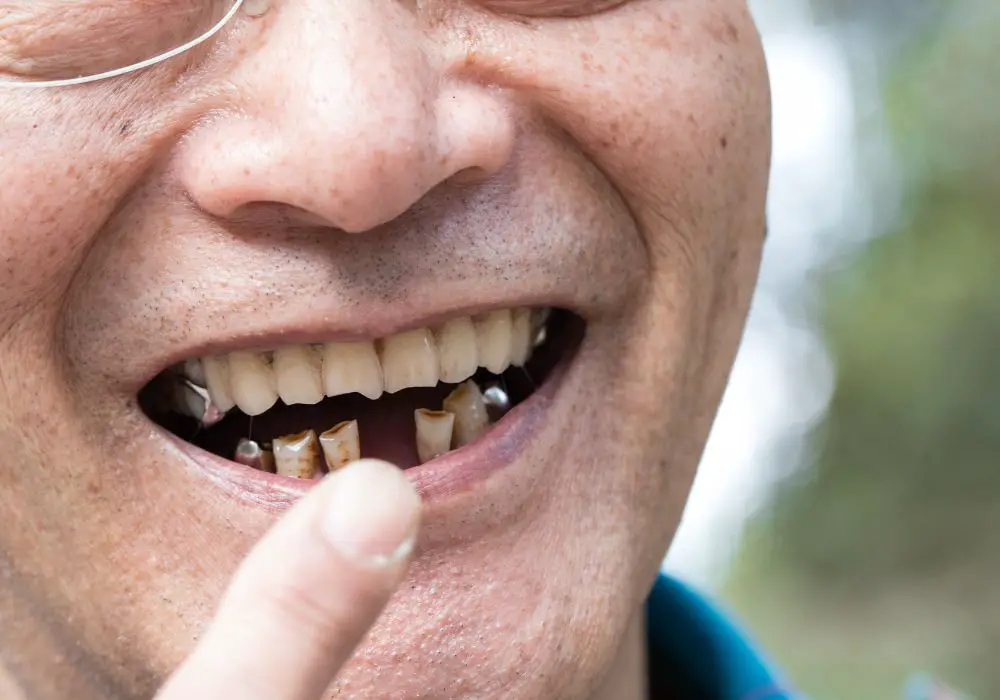
While scraping is not recommended, you can help minimize stains and slow their progression using safe brushing and mild whitening techniques:
- Brush gently twice daily – Use a soft-bristled toothbrush and fluoride toothpaste. Avoid pressing too hard or using a sawing motion. Letting paste sit helps lift some stains before spitting.
- Floss once daily – Flossing removes plaque from between teeth and helps prevent more stains forming.
- Use whitening toothpaste – Look for brands with hydrogen peroxide, carbamide peroxide, or baking soda. These can gently lift some extrinsic stains over time with regular use.
- Try over-the-counter whitening strips or gels – Products like Crest Whitestrips contain low concentrations of peroxide that can slowly lighten teeth a few shades when used consistently according to directions.
- Rinse after eating and drinking – Swish water around your mouth to help wash away staining compounds and prevent them setting into enamel.
- Drink staining beverages through a straw – This minimizes contact between staining liquids and your front teeth.
- Limit staining foods and tobacco – Restrict intake of dark liquids like coffee, tea, cola, and red wine which contribute to extrinsic stains setting into teeth. Avoid smoking.
- Get professional teeth cleanings – A dental hygienist can remove built-up plaque and surface stains above and below the gumline through scaling and polishing. A cleaning takes stains off safely without damaging enamel.
When to See a Dentist About Tooth Stain Removal
If you have severe tooth discoloration or stains that bother you for cosmetic reasons, make an appointment to talk to your dentist. A dentist can evaluate what is causing the stains and discuss professional whitening and restoration options that are safe and effective.
See a dentist right away if you have:
- Pain, sensitivity, cracks, or damage after attempting to scrape off stains aggressively. The dentist needs to inspect for enamel loss, decay, or the need for repairs.
- Rapid development of new stains and discoloration. Sudden color changes may indicate a dental health issue needing treatment.
- Stains along with other worrisome symptoms. Dark stains accompanied by swelling, oral sores, or loose teeth may be a sign of infection or decay requiring prompt dental care.
- Very severe intrinsic staining affecting your smile, self-esteem, or ability to speak confidently. Options like dental veneers or bonding can mask intrinsic stains that do not respond well to professional whitening treatments.
Professional Teeth Whitening Treatments
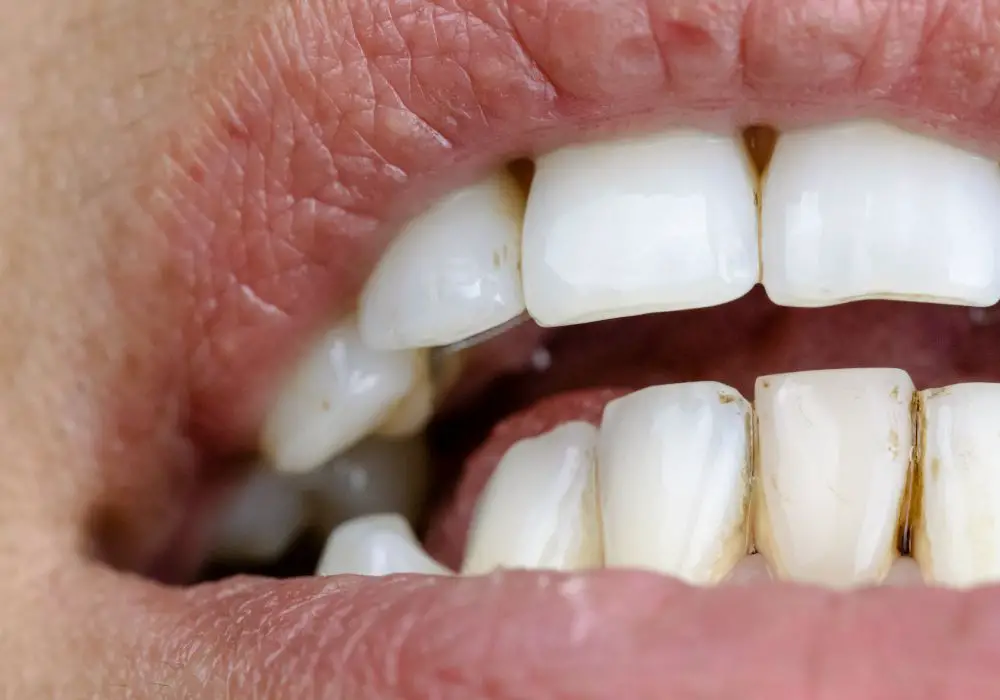
For significant stain removal and whitening, professional options performed by your dentist are the most effective:
In-Office Bleaching
- Uses higher concentrate hydrogen or carbamide peroxide gels – up to 40%.
- Applied to teeth and accelerated with laser light or heat.
- Results seen after 1 hour session. May require multiple visits.
- For stubborn stains unresponsive to other whitening methods.
Custom Take-Home Whitening Trays
- Customized trays are made to fit your teeth.
- Fill with 15-20% hydrogen peroxide gels.
- Wear for 1-2 hours daily for 1-2 weeks.
- Gradual results, lower peroxide exposure than in-office method.
Other Stain Removal Treatments
- Air abrasion to blast away set-in stains.
- Microabrasion to remove outer enamel layer with acid and abrasive tool.
- If stains cannot be removed, veneers or dental bonding can mask discoloration by applying tooth-colored material to the surface of teeth.
Frequently Asked Questions
Should I use baking soda to scrape off stains from my teeth?
No, baking soda should not be used to scrape your teeth. While baking soda can provide gentle cleaning power when used in toothpaste, directly applying dry baking soda and scraping aggressively can damage enamel. The gritty texture makes it too abrasive. Speak to your dentist before trying any DIY staining removal methods.
Can I use a toothpick, dental tool, or nail file to scrape stains off my teeth?
Using metal tools or abrasive objects to scrape stains off your teeth is never recommended. The enamel can chip and fracture under too much scraping force, leading to permanent defects. Stains that penetrate below the enamel cannot be scraped away either. See your dentist for professional stain removal techniques instead of attempting DIY scraping.
Is charcoal toothpaste safe to use for scraping off stains?
Charcoal toothpaste contains highly abrasive charcoal particles that can be damaging if used to scrape your teeth vigorously. Charcoal may help draw out some surface stains gently when brushing, but scraping motions are too aggressive. Rub charcoal toothpaste lightly onto your teeth and research brands carefully before use, as some contain irritating ingredients. Overall, charcoal cannot remove intrinsic or set-in stains.
Can I use whitening strips or paint-on gels to scrape stains off my teeth?
Whitening strips and brush-on whitening gels help lift some extrinsic stains through chemicals like hydrogen peroxide, not through scraping your teeth. Avoid applying too much pressure when using whitening products on your teeth. Follow the manufacturer’s directions carefully and do not overuse them or leave them on for longer than recommended, as this can damage enamel. Whitening products alone cannot remove deep intrinsic stains.
Will professional teeth cleaning scrape off all my stains?
A professional dental cleaning can safely remove built-up plaque and some surface extrinsic stains through polishing and scaling. However, deeper intrinsic stains may remain even after a thorough cleaning. Avoid any dentist who scrapes your teeth aggressively enough to cause discomfort or damage. For resistant intrinsic stains, more intensive whitening or masking options may be required after cleaning. Be patient with the process and avoid attempting to scrape off remaining stains yourself after a cleaning.
Conclusion
While scraping or aggressively brushing your teeth will not effectively remove stains, speak to your dentist if you are bothered by tooth discoloration. There are many safe and effective professional whitening treatments performed by dentists that can significantly brighten your smile. Trying to scrape away stains yourself only risks permanent damage to your tooth enamel and root surfaces. Be patient, consistent with at-home whitening methods, and see a dentist for the most dramatic stain removal results.


